Хаас за Унгария
Ромен Грожан:
What are your expectations for Hungary? Does the tighter track pose more of a challenge for Rich Energy Haas F1 Team or can it benefit the Haas VF-19?
We don’t really know how it’s going to go. We take everything race-by-race at the moment. For now, we’re in an experimental time as the car has been quite tricky to understand. At some tracks where we thought we’d do well, we did not, and other tracks where we thought it was going to be a bit more tricky, things actually worked better. So, let’s just go race-by-race. Hungary is one of my favorite races of the year. I love the fans there, I love the circuit, the atmosphere, and it’s always the summer. It’s right before our summer break, so you know you can really go flat-out then recharge your batteries. I’m looking forward to going there.
A lot of grip, a lot of braking and a lot of high-energy demands all conspire against tires at the Hungaroring. What do you need to do to manage the tires and get the most out of them?
They don’t get much rest in Budapest, that’s for sure. There aren’t many high-speed corners, which doesn’t put too much energy into them, but there’s no rest either, and temperatures can be really high. It’s a good challenge on tires, and getting them to work nicely in the window.
You’re constantly turning the wheel at the Hungaroring and with the slower speeds, very little air flows into the car. Combined with the normally high temperatures experienced in Budapest, how physically demanding is the Hungarian Grand Prix?
It’s a tough grand prix because of the heat and a lack of straight lines. There’s a lot of action behind the steering wheel. The g-forces aren’t as high as they can be at some other places, but it’s a tough grand prix. I like the challenge.
In seven career Formula One starts at the Hungaroring you’ve finished in the top-10 four times, with a best finish of third in your first race there in 2012. What makes it such a good track for you?
I’ve always enjoyed the Hungaroring. I was on the front row in 2012 also, my best grid start ever. Obviously, in Formula One you rely a lot on the car, so I guess I must’ve had some good cars there. I also scored my first pole position in GP2 there in 2008. I’ve always had a good feeling there, and I’ve always enjoyed driving there.
Considering the amount of work the team has put into sorting the Haas VF-19s finicky nature, how important is the shutdown for Rich Energy Haas F1 Team personnel to take a break and come back refreshed for the final nine races of the season?
I think for everyone it’s important. It doesn’t matter if you’re leading or fighting, it’s draining. We’ve been racing now for four months, every other week, so everyone needs a bit of a rest. Summer break is always welcomed for that. We know the second part of the season is not any less tiring. There’s a lot of travel, which is great, but there’s a lot of jetlag and fatigue that goes with that.
What will you do for your own well-being and self-preservation during the summer shutdown?
I spend some good time with my family, especially with my kids and my wife. I’ll probably go cycling – too much as my wife would say, not enough I would say. I’ll do a bit of kite surfing, because we’ve decided to go on vacation where there’s some wind.
Work continues on the 2019 car and directions are being determined for the 2020 car, but an overview of regulations for the 2021 car has been revealed. What are your thoughts on the 2021 car, which features a new ground effect design that includes a much simpler front wing?
As drivers, we want better racing. We want to be able to follow another car, to be closer. I think those rules are going in a good direction. We’re hoping Pirelli can help us also with the tires. We hope that 2021 will be a good turn made by Formula One.
Кевин Магнусен: What are your expectations for Hungary? Does the tighter track pose more of a challenge for Rich Energy Haas F1 Team or can it benefit the Haas VF-19?
It’s hard to say, really. We were strong in Monaco – that’s a pretty low-speed track, as is Hungary – but obviously not quite like Monaco. We’ll see when we get there. It’s pretty hard these days to make too many predictions.
A lot of grip, a lot of braking and a lot of high-energy demands all conspire against tires at the Hungaroring. What do you need to do to manage the tires and get the most out of them?
You try and keep the rear tires – the tire surface temperature – in control with the throttle. You manage those temperatures as well as you can. That’s the main thing.
You’re constantly turning the wheel at the Hungaroring and with the slower speeds, very little air flows into the car. Combined with the normally high temperatures experienced in Budapest, how physically demanding is the Hungarian Grand Prix?
It’s very physical because you don’t get many breaks. You’re always turning on the steering wheel. You’re always active in the car. Every track has its own characteristics. Hungary is a pretty enjoyable track to drive, even though it’s such a small and twisty circuit.
Considering the amount of work the team has put into sorting the Haas VF-19s finicky nature, how important is the shutdown for Rich Energy Haas F1 Team personnel to take a break and come back refreshed for the final nine races of the season?
I think it’s important. For us drivers it’s OK, but for the engineers, and especially the mechanics, they don’t get to see their families much during the year. They spend a lot of time together as a team, which is good in some ways as it gets them very close, but it’s a long year and they work crazy hours. It’s very good for them to get some time off and really completely switch off from Formula One.
What will you do for your own well-being and self-preservation during the summer shutdown?
It’s good for us as drivers, mentally, to get that time off, but we don’t need it as much as the guys in the garage.
Work continues on the 2019 car and directions are being determined for the 2020 car, but an overview of regulations for the 2021 car has been revealed. What are your thoughts on the 2021 car, which features a new ground effect design that includes a much simpler front wing?
I have an interest in it, but I feel it’s hard to really know what’s happening. I’ll wait to see what actually gets determined for 2021.
Гюнтер Щайнер: After comparing the team’s original aero spec on Grosjean’s car at Silverstone and Hockenheim with the second-generation spec Magnussen ran at Silverstone along with the third-generation spec Magnussen recently ran at Hockenheim, what is the gameplan for Hungary?
Having compared the three specs at Hockenheim, we still haven’t come to a conclusion as to what is actually happening on our race pace – where we seem to be slow, but can do a good qualifying lap. So, we’ve decided to run again in Budapest – Grosjean with the Melbourne spec and Magnussen with the Hockenheim spec.
After trialing these different aero specs, what will you do with all of the information before the FIA-mandated summer shutdown so that you’re ready for the next round of races in Belgium and Italy? More specifically, how much time do you have to do what you want before you’re forced to take a break for two weeks?
You take all the data and just try to compare where we can improve and see where we went off the plan. At the beginning of the season we were looking very competitive, then in the races after Melbourne, that’s not been the case anymore. So, we need to understand what went sideways, and that is what you do when you compare two specs of car. Hopefully, we can get as much information as possible and come to a conclusion in which direction we need to work.
Considering the amount of work the team has put into sorting the Haas VF-19s finicky nature, how important is the shutdown for Rich Energy Haas F1 Team personnel to take a break and come back refreshed for the final nine races of the season?
Hopefully, we end up on a high, which may or may not happen, but it’s a good thing if we can. Normally, as you cannot work, the only thing you can do is recoup some energy and be ready for when we get going again in Spa.
While physical work on the current car and next year’s car stops during the summer shutdown, it’s difficult to turn off one’s brain. Do you find yourself scribbling down ideas or thinking about what needs to happen next, or are you able to actually tune out Formula One for two weeks?
You never tune out of Formula One at this level where I work. You’re always thinking about it, but you’re not there consciously thinking about it in an office. You do other things. That’s sometimes very good, as you can think a little more with an open mind than you do normally when you’re in the middle of a battle. You try to chill, but you’re always thinking about what you can do better and what needs to be done straight after shutdown.
Work continues on the 2019 car and directions are being determined for the 2020 car, but an overview of regulations for the 2021 car has been revealed. What are your thoughts on the 2021 car, which features a new ground effect design that includes a much simpler front wing?
For 2021, the detail is not very clear at the moment. In general, I think the devil is in the detail, and we need to work on that to make sure we’re not taking a wrong way here. If it is for the benefit of the sport, I have nothing against making changes. If we’re not convinced that it will work, we shouldn’t run the risk of changing too much.


















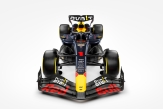
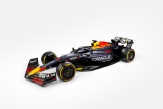

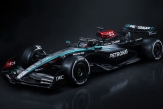
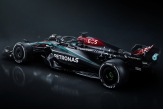


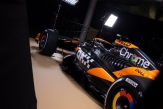

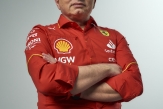
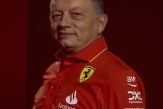
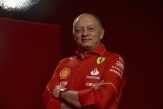

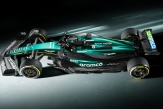

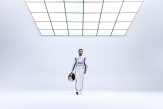


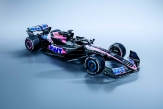
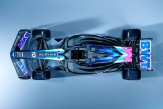

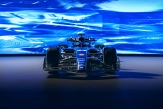
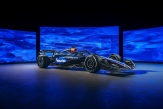
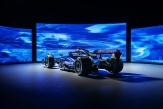
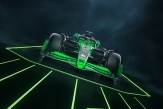
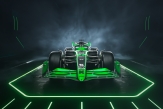
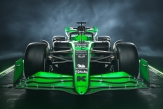

15/04/2024 от Огнян Тенчев (drJeckyll), няма коментари